How to optimize content with AI: A Step-by-Step SEO Guide 2025
Picture this: you pour your heart into creating a series of blog posts for weeks, tweaking every word, perfecting every paragraph.
Then Google decides to tuck it away on page 10 or worse, where nobody will ever find it.
I’ve been there, and it’s soul-crushing and if you don’t your core SEO metrics right you could end up repeating these mistakes.
Marketing trends are changing faster than we can keep up. Those SEO tactics we learned five years ago?
They’re about as useful as a floppy disk today.
It’ll burn through your budget and leave you creatively exhausted.
There has to be a better way, right?
Learning how to optimize content with AI completely changed how I think about creating and ranking content.
When you use AI tools to shape your content strategy, you might even see engagement jump by 83% compared to the old-school approach of creating content like some businesses have already seen.
I’m going to show you the exact steps I use to get the most out of AI for SEO, cut my workload in half, and actually see results.
Let’s get started.
- AI boosts content engagement by 83% compared to old-school methods.
- Tools like Surfer SEO analyze competitors so you don’t have to.
- AI spots content patterns in seconds that take humans weeks.
- Let AI guide your content structure for better readability.
- Use AI to enhance your writing without losing your personality.
- Track what’s actually working with AI-powered analytics dashboards.
- Focus on covering topics thoroughly rather than chasing keywords.
- Think of AI as your writing buddy, not your replacement.
Why Is It Important to Optimize Content With AI?
You know those websites that shoot to the top of Google seemingly overnight?
I used to think they had some kind of magic formula.
Turns out, they’re probably using AI to produce and optimize their content and it’s completely changing how we approach things.
Using AI to optimize your content lets you dig into your content and make it better in ways we never thought possible until recently.
Picture having a brilliant strategist working 24/7, fine-tuning every paragraph, every headline, making sure your content hits the mark with both search engines and actual people reading your content.
The tech behind this includes some pretty impressive stuff:
- Natural Language Processing (NLP) that helps AI understand context
- Machine learning algorithms that predict search trends
- Semantic search analysis for better keyword targeting
- Content performance prediction using AI tools
- Intelligent keyword clustering through AI helping topical authority
Today’s AI actually understands what your audience wants and what search engines are rewarding.
Tools like Surfer SEO and Clearscope use AI to study the top-ranking content for the keyword you want to target and then provides specific recommendations.

It’s the difference between throwing darts blindfolded and having a laser-guided system that rarely misses.
Modern AI tools can process thousands of search results in seconds, spotting patterns in high-performing content that would take humans weeks to find if at all.
AI tools can look at everything from semantic keywords to creating and streamlining outlines and briefs, helping you create content that matches with both the search intent (what people expect to see) and the search algorithms.
The AI Content Optimization Process
Here’s how the AI content optimization process works from start to finish, broken down into simple steps:
Step 1 – AI Content Analysis
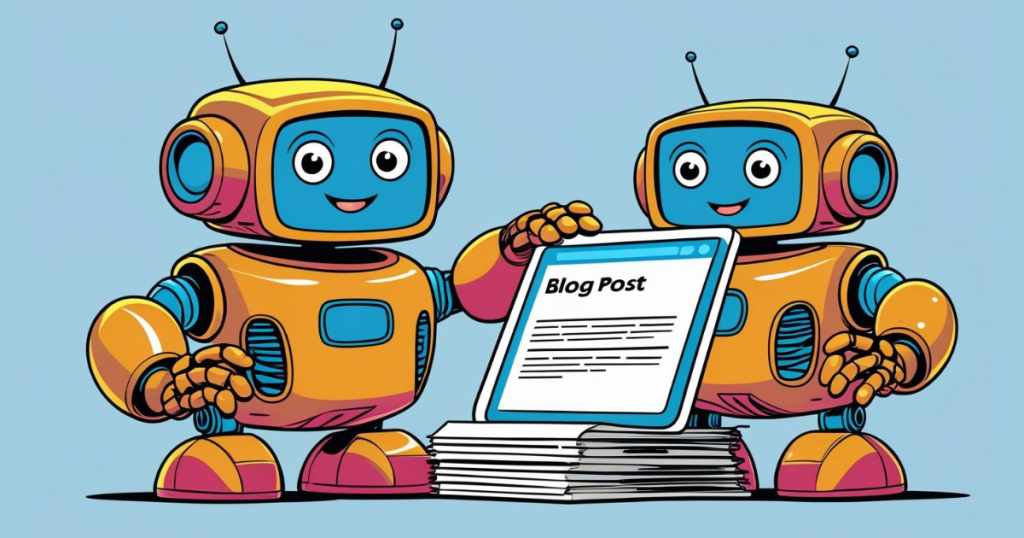
Have you ever gotten that nagging feeling when you’ve finished writing something but it still feels… off?
That’s exactly why I started using AI to analyse my existing content to see how it can be improved and built upon.
I had grown tired of spending countless hours squinting at my own work manually and still missing obvious improvements.
I realised I needed help.
Here’s the thing about AI tools – it’s not just some robot reading your text.
Tools like MarketMuse and Frase use AI to do in-depth content audits, comparing your content against top-ranking pages in search results.
What AI tools actually look at:
• Whether your content makes semantic sense to AI crawlers
• How deep you’ve gone into the topic compared to competitors
• If you’ve hit the right keywords naturally within your content
• Whether real people can actually read it (readability metrics)
• Where your structure falls apart according to search engine optimization best practices
AI tools can conduct content analysis by identifying content gaps in the top 20 search results for your target keyword.
They’ll show you exactly which topics competitors cover that you’re missing, plus suggest specific semantic keywords to include.
Here’s what I’ve learned, though – these insights are just your starting point.
The magic happens when you combine the AI advice with your own observations and creativity.
Step 2 – AI-Powered Keyword Research
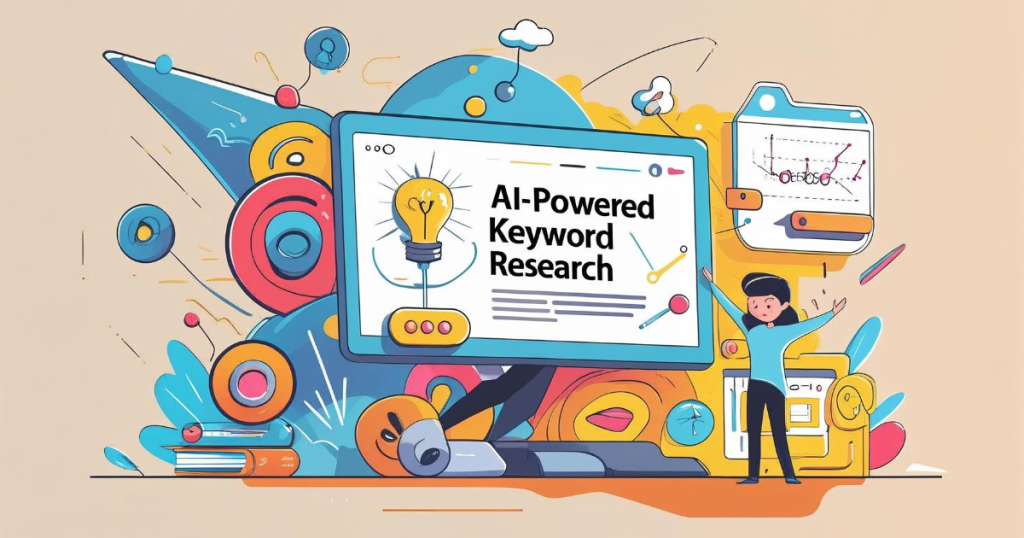
I used to spend entire afternoons buried in spreadsheets, manually hunting down keywords like I was searching for buried treasure.
Those were the days when keyword research meant hours of mind numbing work that left me questioning my life choices.
But AI tools have completely flipped the script.
These clever tools dig up keyword relationships I’d probably never stumble across, even after weeks of searching. I just toss prompts at AI like:
- “Find question-based keywords around AI writing tools”
- “Create 30 long-tail keywords for content optimization targeting beginners”
And boom – I’ve got a complete content plan mapped out in under 10 minutes.
Sure, AI doesn’t always know which keywords are actually doable to rank for, but topical authority has become way more important than those arbitrary numbers we used to obsess over in keyword tools.
Google now rewards websites that go deep into topics rather than just cherry-picking random keywords.
So if you can cover your niche more thoroughly than your competition, then you have a real advantage.
This means that with AI content creation happening at lightning speed, this beats beats hunting for that one “perfect” keyword.
Tools like Ahrefs and SEMrush have jumped on the AI bandwagon too, rolling out features that can:
- Identify long-tail keywords with serious conversion potential
- Track search volume patterns across different content formats
- Recommend semantic keywords that boost your search visibility
- Predict which keywords will actually bring you quality traffic
My go-to approach? I let AI brainstorm the keyword opportunities, then I take those suggestions to Ahrefs for a reality check.
AI handles the creative heavy lifting; I bring my real-world experience to the table.
Take “content optimization” – Ahrefs shows over 2000 monthly searches for that term.
But my experience tells me that going after “How To Use AI for content optimization” will likely perform better because it matches how people actually search when they’re ready to take action.
Step 3 – Content Structure Optimization Using AI
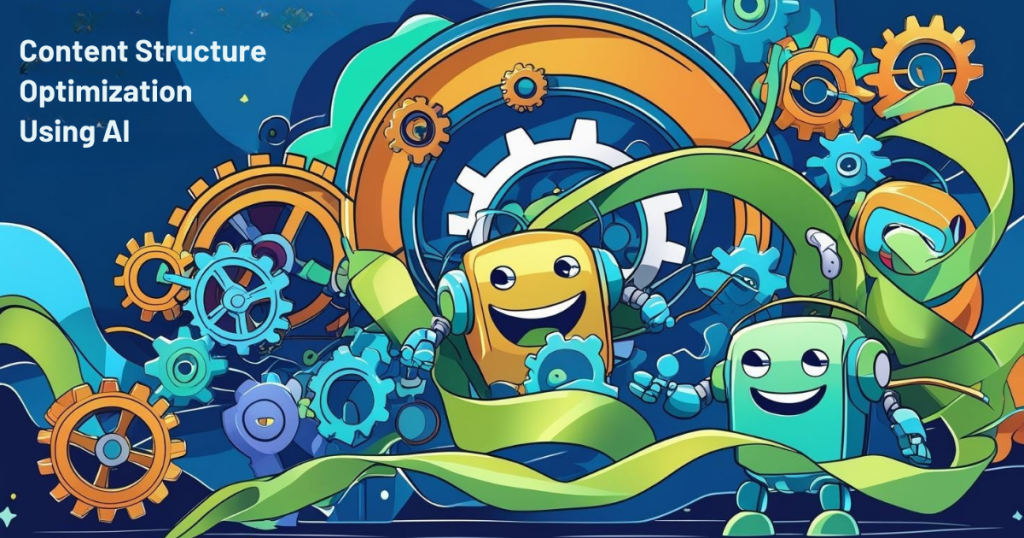
I’ll be honest – my early blog posts were complete structural disasters.
Random paragraph breaks everywhere, headers that went absolutely nowhere, and a flow so choppy it made readers bounce faster than a rubber ball.
That’s when it hit me: AI could be my secret weapon for nailing content structure every single time.
Here’s my exact process. Take your messy first draft and feed it to your go-to AI tool (ChatGPT, Claude, Gemini – whatever you prefer) with this prompt:
“Look at this content structure and suggest improvements for readability and SEO. Flag any sections that feel too long or confusing.”
The AI will look at everything – whether your H2s actually back up your main point, if your sections drag on too long, and those sneaky spots where readers start losing interest.
For word count, I get specific: “What’s the optimal length for [my target keyword] based on what’s currently ranking?”
Most competitive topics need that 1,500-2,500 word sweet spot to have a fighting chance.
A handy structure prompt thats worked well for me in the past is:
“Create a content outline for [topic] using this flow: problem → solution → implementation → results. Make each section lead smoothly into the next one.”
With AI at the controls of your content outlining process you can be assured that you’ll have:
- Header patterns that match real search behavior
- Paragraph lengths that keep people scrolling (50-150 words hits the mark)
- Perfect spots for internal links that actually boost rankings
- Content formats that perform – whether that’s lists, step-by-step guides, or comprehensive deep dives
Here’s what I’ve learned though – perfection isn’t the point. I want to create stuff people genuinely want to read while making sure Google can’t ignore it.
AI gives me that sweet spot where content feels completely natural to humans but ticks every box search engines care about.
Step 4 – Improve and Streamline Content with Generative AI
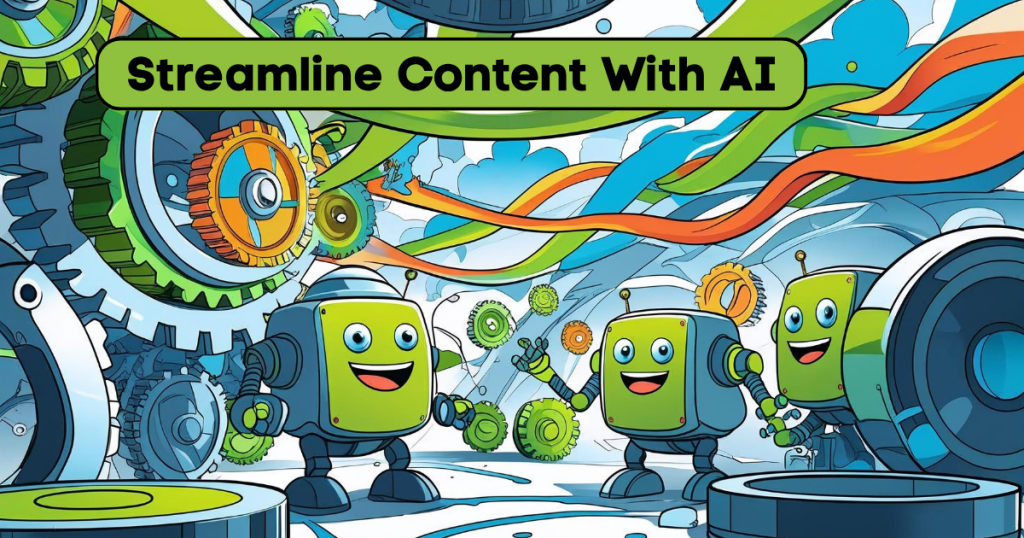
Imagine having a writing mentor who’s always available and never gets tired of your questions.
That’s basically what AI content enhancement feels like. While you write, generative AI tools like Jasper and Copy.ai analyze every sentence and suggest ways to make it better.
These tools help with everything from making your language richer to fixing those awkward sentences you can’t quite put your finger on.
They catch when you’re being too vague or when a paragraph needs more punch to keep readers hooked.
Generative AI can also help you:
- Generate content ideas based on trending topics
- Create multiple headline variations for A/B testing
- Optimize existing content for better search engine rankings
- Ensure your content covers all relevant subtopics
Just remember – these are suggestions, not commandments.
Your voice is what makes your content unique, so don’t let any AI agent steamroll your personality.
The goal is to use AI to enhance your content, not replace your creative input.
Step 5 – Performance Tracking with AI Analytics
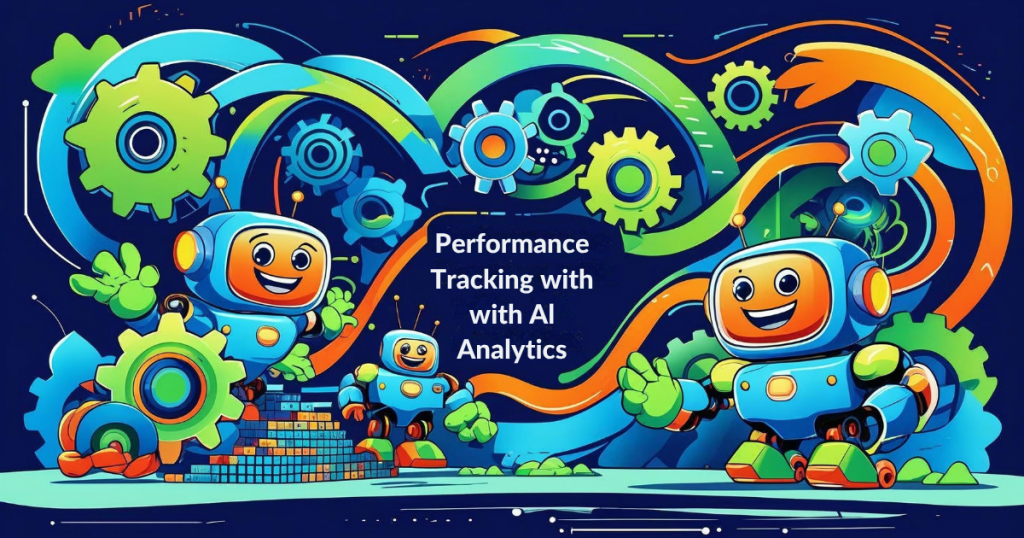
If you’re a data nerd like me, you’re going to love what AI has done for content analytics.
No more throwing content into the void and hoping it sticks. Now you can get clear data showing exactly what’s working and what’s flopping.
Google Analytics 4 uses machine learning through its Analytics Intelligence toolkit to spot anomalies and trends that impact your performance The Most Useful AI Features in Google Analytics 4 | WordStream. You can ask it questions like “Which headlines pulled in the most organic clicks this month?” or “Show me where readers are dropping off in my long-form guides.”
Here’s what you can actually track: ChatGPT often shows up as a significant traffic source How to track AI traffic in GA4 – Optimize Smart, and some businesses are getting qualified leads from people who find them through AI platforms. You can create custom segments in GA4 to separate AI traffic from regular search traffic.
GA4’s predictive features can identify likely customer actions based on existing data How to Track Traffic from AI Overviews (AIO), Featured Snippets, or People Also Ask (PAA) Results in Google Analytics 4 (GA4) | KP Playbook, so you’ll know which content types work best before wasting time creating more.
Your setup can include:
- Tracking traffic from AI Overviews and featured snippets using custom JavaScript variables (Source)
- Monitoring which pieces perform better on Google versus social platforms
- Using audience segmentation based on demographics and user behavior (source) to see what content resonates
- Setting up predictive audiences to identify users likely to convert or churn (source)
Try this prompt:
“Show me which content gets shared the most and what makes people stick around versus bounce immediately.”
But here’s what matters after years of metric obsession: check your dashboard once a week, note the big wins and losses, then get back to creating.
Consistent, solid content beats chasing perfect numbers every time.beats perfectionism every single time.
Key Tips for AI Content Optimization
Let’s talk about making AI content actually work for you.
Staring at my screen after my first attempt at using AI – the output sounded like it came straight from a corporate manual. Not exactly what I was going for.
Here’s what you need to know: AI works best as a partner rather than just an assistant who does what you ask 12 Best AI Tools to Use for Content Creation in 2025, not some replacement for your brain.
Want natural-sounding content while still getting help from AI? Here’s what works:
- Read everything out loud before hitting publish
- Use AI to generate content outlines, then write them yourself
- Keep that conversational tone you’d use with a friend
- Double-check anything that sounds too good to be true
- Make sure it sounds like you, not a press release
The key is treating AI as a collaborator that continually helps with the speed, insights, and creativity of your content Content workflow: How to use AI to create great campaigns – Optimizely, not something you “set and forget.”
AI is good at data analysis and pattern recognition 12 Best AI Tools to Use for Content Creation in 2025, but you bring the human insights that make content valuable.
AI can tell you that “content optimization” appears 47 times in top-ranking articles, but you know your audience well enough to use it naturally.
Here’s a specific workflow you can use:
- Let AI look at competitor content and spot content gaps in your strategy
- Use AI to generate comprehensive content outlines between your planning and writing stages
- Write the first draft yourself, incorporating AI insights
- Run the draft through AI optimization tools for refinement, but add your unique brand perspective
- Use AI to analyze engagement patterns and recommend optimal publishing schedules
Your audience isn’t looking for perfection – they’re looking for something that feels authentic and helps them solve problems.
Bonus AI Optimization Strategies
Here’s the thing about AI content optimization – most people get stuck making small tweaks when the big wins come from thinking differently.
You need to step back and see how personalization and future-proofing actually work together.
What I’ve learned through lots of testing is that real optimization goes way beyond adjusting settings. You’re building content that changes and learns. Try these methods:
Generative AI for Content Scaling
Use AI platforms like OpenAI’s GPT-4 or Claude to make different versions of content for different groups of people.
Feed your existing blog post into ChatGPT with this prompt: “Rewrite this for [specific audience] while keeping the same SEO keywords and structure.” Do this for 3-4 different audience types.
AI-Powered Content Audits
Tools like ContentKing use AI to watch your content performance all the time and tell you what to fix.
Set up automated alerts for when your content drops in rankings or when competitors publish new content on your topics.
SEO for AI Overviews
With Google’s AI overviews getting bigger, make your content show up in these AI-made summaries.
Add FAQ sections with questions starting with “What,” “How,” “Why,” and “When.” Keep answers under 50 words each.
Semantic SEO with AI
Go past basic keyword optimization.
Paste your target keyword into ChatGPT and ask: “Give me 20 related terms and subtopics for this keyword.” Then make sure your content covers at least 15 of them.
Here’s my exact process: I take my main topic and ask AI to map out every related concept people might search for. Then I make sure my content answers those questions before they’re even asked.
The truth about modern SEO? Search engines want comprehensive coverage, not keyword stuffing.
Use AI to find gaps in your content, then fill them with actual useful information.
Different Scenarios for AI Optimization
After lots of late nights working on content strategies (and plenty of mistakes), I’ve found that almost every page on your site can get better with specific AI tactics.
Here’s what works in different situations:
Blog Posts Optimization
- Paste trending topics from Google Trends into ChatGPT and ask: “Create 10 blog post angles for this topic”
- Use AI to analyze your top 3 competitors’ content and find topics they missed
- Ask AI to rewrite your conclusion paragraphs to include more semantic keywords
- Create content briefs that cover 15-20 related subtopics instead of just your main keyword
Product Pages Enhancement
- Copy 10 negative reviews into AI and ask: “What concerns do these customers have?” Then address those concerns in your product copy
- Use AI to generate product descriptions that include buying-intent phrases like “best for,” “perfect when,” and “ideal if”
- Ask AI to create FAQ sections based on actual customer questions from your support team
- Generate comparison charts showing your product versus competitors using AI analysis
Service Pages Improvement
- Feed your service page to AI with local competitor URLs and ask: “How can I differentiate this service page?”
- Use AI to create location-specific content for each city you serve
- Generate case studies by asking AI to structure your client success stories with specific metrics
- Create service process explanations that answer “how long does it take” and “what’s included”
Here’s my rule: AI gives me the framework, but I add the specific details that only I know about my business.
The key is knowing that different content types need different AI approaches.
Blog content works best when AI helps with research and structure. Product pages need AI for addressing specific customer concerns. Service pages work when AI helps with local optimization and trust signals.
Conclusion
Learning how to optimize content with AI doesn’t have to be complicated – it just requires the right approach and tools.
The real win isn’t replacing your creativity with robots, but using AI to handle the technical stuff so you can focus on creating content that connects with people.
From keyword research that takes minutes to content audits that catch issues you’d miss, AI gives you abilities you didn’t know you needed.
Start with one method from this guide and test it for a month. You don’t need to change everything at once – just add pieces until you’ve built a system that works for you.







